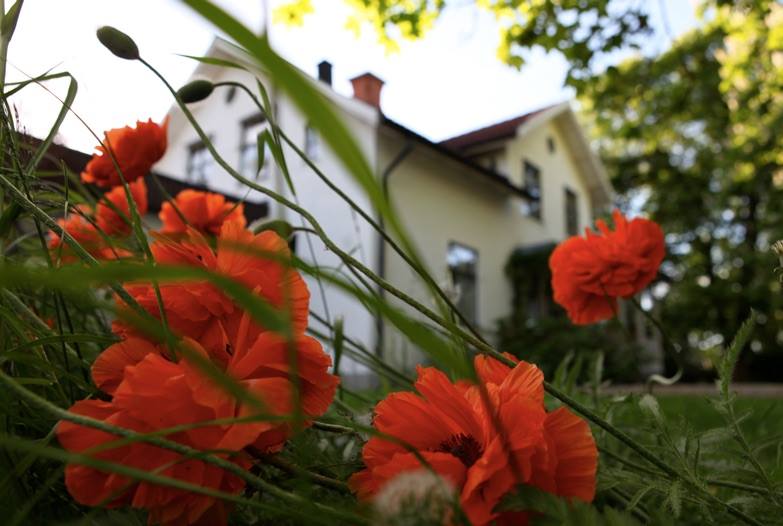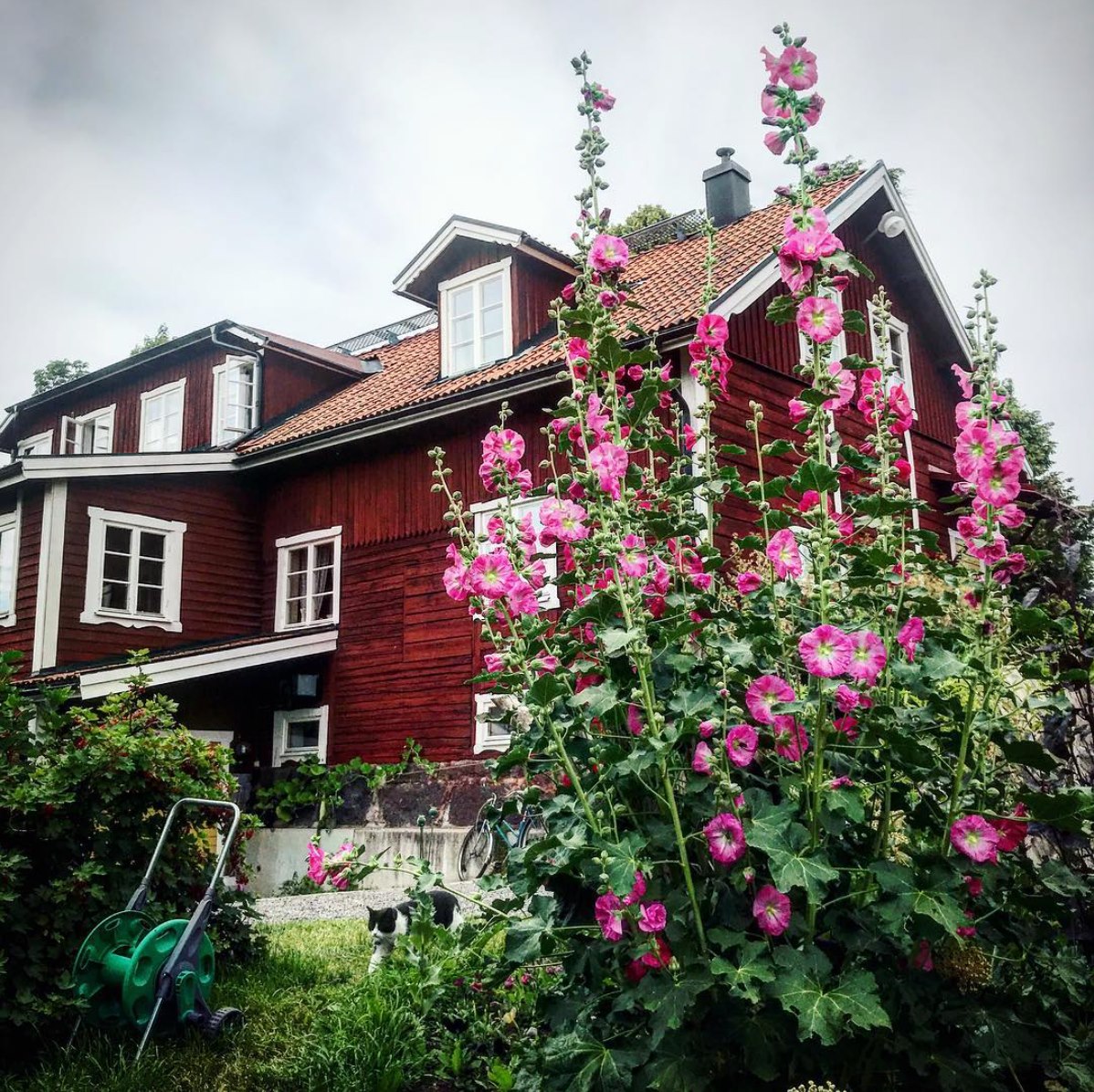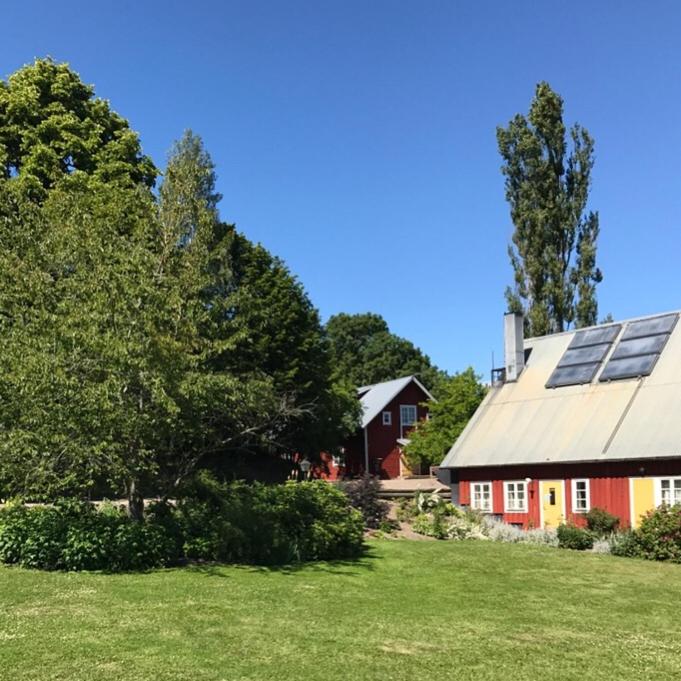Klefstad har varit en boplats sedan 1000-talet. År 1469 är det första gången omnämnt skriftligen som Klifstadha. Själva gården är från 1600-talet och bestod fram slutet av 1800-talet av tre arrendegårdar under det närliggande godset Ekenäs.
Familjen Jonsson bodde på Klefstad och Jonas Petter Jonsson köpte gården 1893. Omedelbart genomförde han stora förändringar, som att ersätta de gamla ladugårdarna med en ny stor ladugård för ca 20 kor med ungdjur, bygga en loge 1897 samt år 1905 uppföra en ny mangårdsbyggnad – delvis av virket från de gamla gårdshusen. Restaurangbyggnaden hade uppförts redan under 1700-talet.
Jonas Petter Jonsson avled 1911, endast 45 år gammal, och lämnade då gården till sonen Fritz som bara var 18 år. Fritz hade därför ingen möjlighet att utbilda sig, utan fortsatte lantbruksdriften med sin mamma Alma. Fritz gifte sig med Elsa 1929 och tillsammans fick de barnen Birger 1930 och Britt 1932. Med båda sina föräldrar i livet hade Birger helt andra förutsättningar, och fick därmed förmånen att gå i Linköpings läroverk och ta studenten 1949. Därefter utbildade sig Birger till agronom och var färdig 1956.
Ett år senare övertog Birger gården och startade smågrisproduktion, som han utvecklade till en besättning om 100 suggor.
Parallellt med gårdsdriften undervisade Birger under vinterhalvåret på Skurup. När Birger och Märtha träffades på en dans 1959 blev de snart ett par. Året därpå gifte de sig och flyttade till Klefstad där de tillsammans har uppfostrat fem barn.
*Utbildningen till lanthushållslärare upphörde 1977, men omfattade i korthet hushållsekonomi, textilkunskap, matlagning, konservering, bakning och trädgårdsplanering. I och med dagens nyväckta intresse för mat utan tillsatser och miljömedveten livsstil blir dessa kunskaer alltmer eftertraktade. Läs mer om vikten av dåtidens utbildning för övergången från bondesamhället till industrisamhället.
Uppsala Universitet Fackskolan för huslig ekonomi
Cornell University What Was Home Economics
Cornell University Vad var huslig ekonomi [översatt via google translator]
Märtha Jonsson Lanthushållslärare* och krögare
Märtha flyttade redan 1960 till Klefstad från Skillinge på Österlen, och läste därefter till lanthushållslärare på Fackskolan för huslig ekonomi i Uppsala 1961-1964. Märtha har arbetat som hemkonsulent och konsumentvägledare i Linköping – samt ritat kök för privatpersoner under 70- och 80-talen. Märtha ser möjligheter i allt och har ritat om de flesta hus på gården, så att byggnaderna på ett varsamt sätt har förvandlats från dåtidens ekonomibyggnader till dagens verksamhet.
Birger Jonsson Agronom
Birger läste på Ultuna 1951-1956 och övertog därefter gården efter sin far. Under 50-talet undervisade Birger på Skurup i Skåne, där han 1959 träffade Märtha. Birger undervisade på Vreta Klosters lantbruksskola, arbetade som lekmannarevisor för Odal, Slakteriförbundet och Kontrollhudar, samt satt i Farmeks styrelse. Genom hela sin tid på Klefstad tog Birger fasta på ny teknik och nya metoder och gick i bräschen för utveckling. Exempel på detta är när Birger investerade i solceller på den nybyggda maskinhallen 1981, samt en dator samma år. Birger lämnade oss 2017 men kvar finns idéerna och tekniken – ett arv vi försöker vårda på bästa sätt.
Både Märtha och Birger arbetade i perioder heltid som bönder på gården, där produktionen har växlat mellan mjölkkor, köttdjur och svin. Sedan 1986 drev de tillsammans Klefstad gårdsrestaurang som sedan gått över i rum och frukost.
Elina Jonsson
Dottern Elina har tagit över gården och driver den tillsammans med Märtha vidare i samma anda – ibland på distans då hon periodvis arbetar utomlands.



